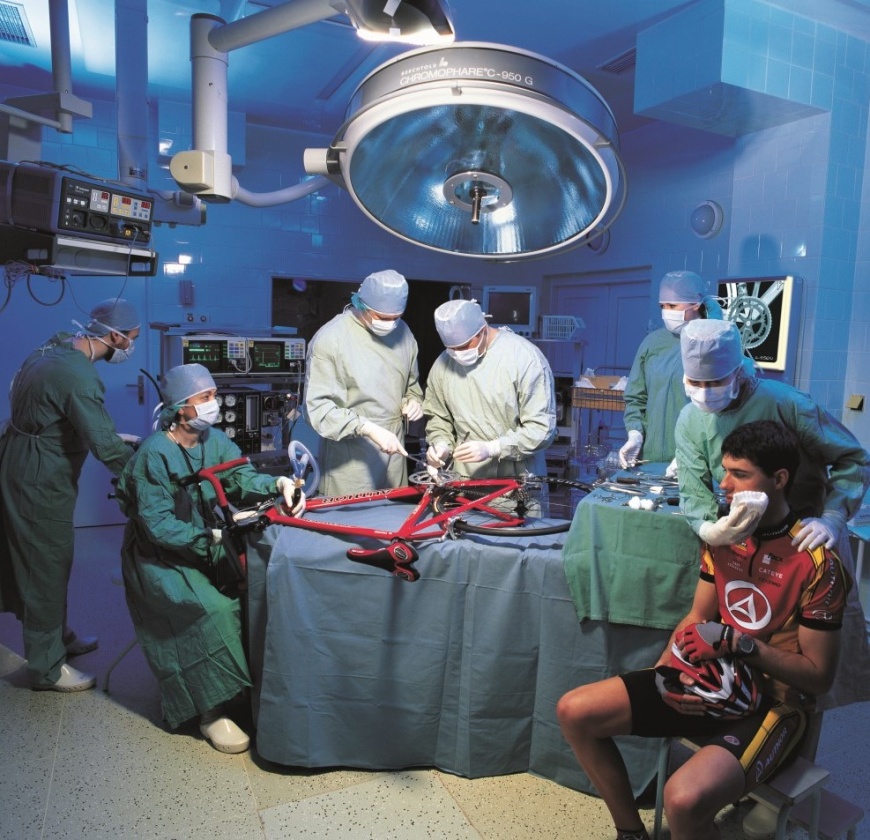We have some advice and tips for you on how to prevent big hits! Regular maintenance saves you money!

1. Washing and cleaning
It is ideal to wash the whole wheel, moisten the wheel (with a very gentle stream or we can use a watering can with a sprinkler). Then we apply the CC Bike Cleaner LemonTechFoam foam to the bike using a mechanical foamer. Let the foam work, remove coarser dirt with the CC 720 brush. The CC 700 brush is suitable for the transmission system (cranks, cassette, derailleur and derailleur). Clean the chain thoroughly in the CC 710 chain washer, which can also be used with LemonTech Bike Cleaner. In the case of heavier contamination of transmission components, we use CC Chain Cleaner. Finally, rinse the wheel with free running water. NEVER use "pressure washing", the components of the bike are not resistant to pressurized water and unwanted water with impurities will thus get into all the components (suspension, hubs, central assembly...).
Special care must be taken with the braking system. If you have a bicycle with rim brakes, we clean the braking surfaces of the rims with a CC N20 / N40 sanding block and then degrease with CC Disc Cleaner. With this care, we will increase the efficiency of the braking system.
Hydraulic brakes deserve more care to be 100% functional. We clean the discs with a CC N20 / N40 sanding block and then degrease them with the CC Disc Cleaner. Apply CC Brakepad Cleaner to the brake pads and wipe dry.
2. After general cleaning, we can check the wear of individual components:
Using a special gauge, we determine the length of the chain.
we will visually check the wear of the brake lining (pads or blocks), brake surfaces of rims or brake discs. Rims and discs have wear indicators.
We will evaluate the condition of the tires (height of the sample, possible side cracks).
We spin the wheels and check whether the rims or tires are not thrown vertically or sideways, while also assessing the condition of the bearings (whether they are noisy and whether the wheels spin smoothly and without vibrations).
3. With a test ride, we will test whether the bike shifts and brakes well, does not throw anything, knock or bang anywhere. We will also focus on the suspension function.
4. If everything is in order, just lubricate the relevant components:
Chain with a special lubricant, e.g. Cycle Clinic Chain Lube in a practical sprayer is suitable (watch out for disc brakes). We do not use universal lubricants such as the popular WD-40, which do not last long on the chain. After application, wait a while and wipe off the excess lubricant with a rag.
Treat the inner legs of the suspension fork or the body of the rear shock absorber and the rubber seals with silicone oil CC Suspension Silicone Lube. Brush it several times and wipe off the excess oil with a soft cloth.
For cables and bowdens, we can lubricate with Cycle Clinic Bike Lube multi-purpose oil, which will ensure good function of shifting and cable brakes.
We can treat the wheel frame with a preservative and protective agent.
If we dare and have the necessary tools, it is also possible to look into the bearings (wheel hubs, nut, head assembly, center bushing).
5. If we find a problem (wear, malfunction, etc.), now is the perfect time to fix it.
If we are not technically skilled and do not have the necessary tools, the best option is to visit a bicycle repair shop. Choose a quality and proven service. Preferably one that is part of a large brick and mortar bike shop. Here is the best chance that the mechanics will be professionally up to date, they will have the necessary and high-quality tools at their disposal.
Where to buy...
6. If we want to repair our bike at home, it is of course possible. However, we have to count on the purchase of at least basic tools - in addition to the usual home workshop equipment, various special pullers, conical and centering keys, bearing punches and presses, chain riveter, hydraulic brake bleeding kits, etc. are necessary. We must not forget the assembly stand, without which the wheel is difficult to adjust. These are investments in the order of hundreds to thousands of crowns, which means that it is probably more appropriate for an ordinary recreational cyclist to visit a professional service once or twice a year.
Finally, a few observations for those who ride a bike all year round, i.e. even in winter. Such cyclists are usually experienced and know that a new expensive bike is not suitable for salted roads and snow, but they use a so-called winter bike. It's usually an older bike with mudguards, reflectors and powerful lights. Such a bike is suitable for winter sleet, it does not mind more wear and the possibility of damage. Even such a bike, however, requires at least occasional maintenance and service. It is also advisable to use more durable lubricants designed for more demanding conditions, e.g. Cycle Clinic Chain Lube Extreme is suitable for the chain, which will protect the chain even when wet and will not wash out after a few kilometers like normal oils.
If you have followed our instructions, you will not be surprised by the arrival of spring and the queues at bicycle repair shops. You will be able to start enjoying cycling from the first nice days on a perfectly functional bike. At the same time, you will save money thanks to early detection of possible problems and defects.

